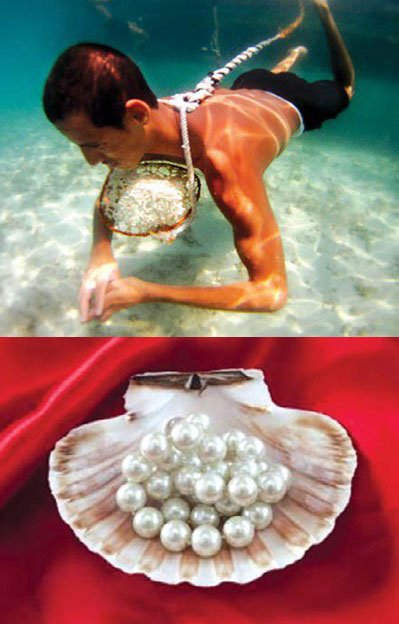 For hundreds of years, the finest pearls in the world were found in the waters of the Arabian Gulf. Pearl diving once represented the rich heritage of UAE, where pearl diving was one of the largest contributors to the economy.
For hundreds of years, the finest pearls in the world were found in the waters of the Arabian Gulf. Pearl diving once represented the rich heritage of UAE, where pearl diving was one of the largest contributors to the economy.
The Pearl divers are known as Ghais (in Arabic). Gulf Pearlers developed their own diving technique and worked in tandem with ‘pullers with strong powerful shoulders’’ known as Saibs. These men were responsible for heaving up baskets of oysters, as well as the divers themselves.
Once over the oyster banks, the oars were lashed on one side of the boat, projecting overboard. Two ropes were hung over each oar. One rope had a basket (Dayeen) attached, the other a weight or heavy stone. The weighted rope (hijara) was looped around the ankle of the diver (ghais) to help him sink to the sea bed.
Once in the water, the diver would place a nose peg made of turtle shell, (Ftaam) to keep his nostrils closed, whilst diving. During the jelly fish season in June, a lightweight cotton suit (Libis) was worn by the divers to protect and prevent serious injury from stings.
PEARLING HISTORY
- The Arabian Gulf was one of the largest natural diving economies in the world.
- By the 20th century, there were more than 1,000 pearling boats along the Trucial Coast employing an estimated 20,000 pearl divers.
- Pearl diving was still in play in the UAE until the 1950s but faded away as less expensive cultured pearls became more accessible.
- The world’s largest pearl, 24 cm in diameter and 6.4 kg in weight is worth $93 million (Dh341.53 million) and was liberated from a giant clam and is currently owned by the Pearl for Peace Foundation, a charitable organization.